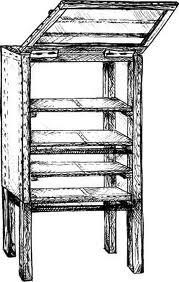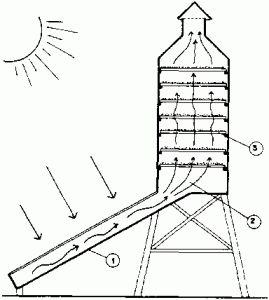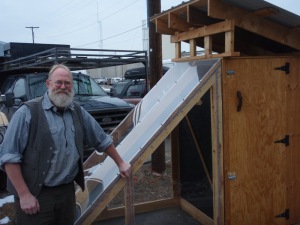Broccoli is arguably my favorite vegetable. Not only for it’s taste, but also for it’s versatility. This year, I have decided to grow a few varieties of Asian Brassicas to diversify even more. I very much enjoy cooking with Rappini like greens such as Kailaan (B.o. alboglabra), Choy Sum (Brassica campestris var. Chinensis) and Yu Choy (Brassica campestris olifera), an edible variety of rape seed.
Most of these vegetables have a small broccoli-esque immature seed head surrounded by tasty kale-like leaves. They are wonderful stir-fried, broiled and steamed and each have their own unique flavours.
Here is a list of the Brassicas that are going into the garden this year:
Brassica rapa. (broccoli raab/rapini)Brassica calabrese (traditional broccoli) two varieties: a sprouting green and a sprouting white.
Brassica oleracea alboglabra. (Kailaan) Crispy blue and south sea cultivars. broc raab like.
B.campestris chinensis (Choy sum) leafy green between kale and broccoli.
B.c. oleifera (Yu choy) an edible var or rape seed.
B. pekinensis (Wong bok) a heading “kim chi” style cabbage.
B. juncea (Chi-sin) a ‘semi-heading’ cabbage
B.o. (Heading Cabbage)
Brassicas are notoriously vulnerable to pests. Interplanting them with aromatic herbs and alliums (onions, garlic, chives etc) will help to protect the brassicas from damage. Chives are nice perennial alliums that will thrive in the same soil conditions as brassicas. Aromatic herbs with composite flowers, such as coriander, will help attract certain beneficial predator insects as well. There are endless variations on this theme that will work. Design within the context of your climate and needs.
Beneficial insects that predate upon aphids are great to have around your brassicas. It is important to keep in mind that most predatory insects (such as ladybugs whose larvae are voracious aphid munchers) reproduce on a longer cycle than Aphids. This means that the Aphids (or other natty beasties) will most probably get the upper hand for a while until the population of beneficials catches up. After a few years, and once your perennial flowers that act as nectaries (food source) and overwintering habitat (that includes more than just the perennial flowers) for the various predatory insects are well established, this gap between pests and their predators should get smaller. If, on the other hand, you let yourself be tempted into spraying poisons (organic or not) throughout the garden, the predators will never get the chance to catch up as their life cycles are longer than the pests’.
In the Okanagan, Brassicas may appreciate some shade (especially in the afternoon) if they are going to be growing through the hottest summer months. Trellises with cucurbits, peas, beans, tomatoes or any other climbing plant on them can work well. Planted in the afternoon shade of trees, large shrubs or structures, brassicas may be able to tough it through some of the warmer months of the summer.
A note on Kailaan: this is a very fast growing plant! do not start it more than a week or two before being able to transplant into the garden or a large enough pot. I made this mistake and found that after 3-4 weeks, my Kailaan are all going to flower on whimpy little stalks…
Most Brassicas need a good supply of Phosphorus to head up well. This means that planting dynamic accumulators of phosphorus around the brassicas and mulching them in place before the brassicas head up could help their growth. It is important to not that if one is trying to increase the amount of available phosphorus in the current growing season, planting a lot of dynamic accumulators may decrease the amount of available nutrients until they decompose. It has been noted that certain accumulators will exude the nutrients they accumulate through their roots. Therefore, if you plant a deep rooted accumulator of phosphorus such as Amaranth, alongside shallower rooted brassicas, the amaranth may be able to mine some minerals from deeper down than the brassicas can and help them flourish. On the other hand, planting an accumulator with a similar root profile as the crop you are trying to help may backfire and do exactly the opposite of what you are trying to accomplish!
Not only is it important to think about the roots but also about the soil that surrounds them. having a recent soil test can help you to adjust the soil chemistry to release nutrients that are currently unavailable. Soil science is extremely complex and I won’t go into any detail here but there are many wonderful resources freely available that can help any enthusiast learn more about this fascinating subject. Check the Resources page on this blog for a place to start.
For those who want to get savvy on their Asian veggies: http://www.thekitchn.com/know-your-asian-greens-98840
Lessons Learned
So far I have learned that these Asian brassicas grow very VERY fast! I thought I’d get a good head start on my Kailaan and started them in early April. 20 days later, after transplanting them each to round 2” pots, they were starting to flower…It was still dangerous to plant them outside and I was left with little baby kaillan, 2” tall. I tried pinching off the flowers on a few of them but instead of growing taller, they just decided to send out more flowers.
My mistake was stressing them and not transplanting them early enough. It will be too warm to plant any of these Asian brassicas in the summer as we regularly get 35-40 Celsius but I will try again in August. This time, I will start them in individual pots that are deeper and wider to allow their roots to really get going. As soon as they show their true leaves, I will pop them into the ground and feed them some compost tea.
Some varieties did much better than others. the South Sea Kailaan that I tried did not do so well, neither did the Yu Choy.
The Crispy Blue Kailaan however has been doing quite well and tastes wonderful raw or slightly cooked (flash fry/steam).
All of these have proved to be especially susceptible to pests, notably flea beetles. When I plant a late summer/fall batch, I will make sure to plant them near some Alliums and Flowering plants that attract beneficial insects.
I will keep an eye on the next batch and if i see any insect ‘damage’ I will use a foliar spray of equisetum (horse tail) and Achillea Millefolium (yarrow) flowers. I like to add these two plants to my compost tea only if insects are taking a little more than their fair share. If that doesn’t cut it, I might toss in some hot peppers and garlic too for extra muscle. I try to use this combo sparingly because I feel it most probably effects a broad range of insects and I don’t like interfering with the garden ecology more than I absolutely have to for fear of causing more damage than I can foresee.






